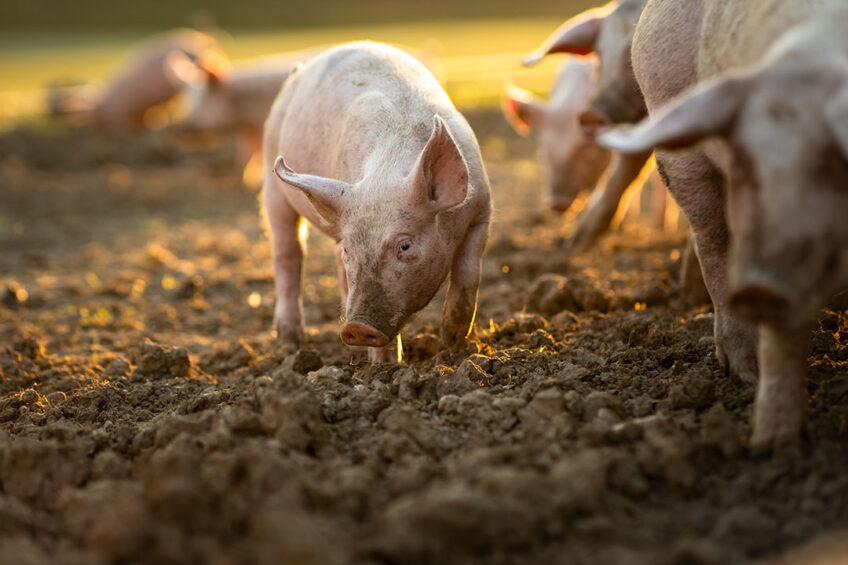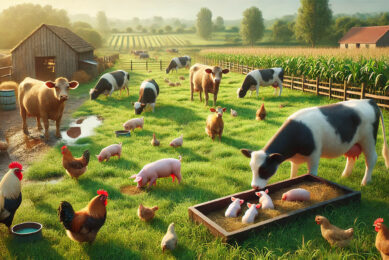A pioneer postbiotic to maintain gut health in pigs

The gut microbiome strongly impacts overall health. Modulation of its composition and function is an emerging concept for consumers, animal producers, and regulators. Postbiotics are among the latest modulators of digestive health.
Part of the Gut Health 2022 Special
Live microorganisms have been used for many years now as food and feed additives to address gut health (‘probiotics’), however, it is becoming increasingly clear that non-living microorganisms, their components, or their metabolites, can also help restore or maintain gut health. Ever since the 2021 consensus paper by the International Scientific Association of Pre- and Probiotics (ISAPP), these intact or fragmented non-living (‘inanimate’) micro-organisms are commonly referred to as ‘postbiotics’. ISAPP defined a postbiotic as ‘a preparation of inanimate micro-organisms and/or their components that confers a health benefit on the target host’. Being inanimate, postbiotics are inherently stable, even in feed and food matrices and can be stored in a wide range of environments. In contrast to other biotics which first need to survive the stomach, germinate, and activate, some postbiotics already contain bioactive metabolites and can thus act immediately on intestinal epithelial cells. Moreover, heat-treatment of bacterial cells may increase their ability to exert immunomodulating effects.
Pioneer in postbiotics
A prototypical postbiotic, with a proven influence on the gut microbiome, is Lactobacillus LB. This strain was first isolated from a healthy human in 1907. Originally categorised as Lactobacillus Boucard after its discoverer, Dr Pierre Boucard, it has since been defined as being a mixture of 2 different species: Lactobacillus fermentum and Lactobacillus delbrueckii.
Following several steps of controlled fermentation, the bacteria are inactivated by heat treatment and dried with their metabolites and culture medium. It can thus be considered, following 100 years of research and a large body of published research, as a ‘pioneer in postbiotics’. Lactobacillus LB can also influence animal health beyond the gastrointestinal tract, by modulating systemic immune- and metabolic responses, and by signalling via the nervous system. It has been extensively studied using in vitro techniques, murine models, and in numerous human clinical studies. Some documented modes of action which have been identified include: ability to bind to intestinal epithelial cells, inhibition of epithelial cell association and invasion by several strains of enteropathogenic bacteria including E.coli and Salmonella, reduction of viable Salmonella cells in mice intestines and prevention of damage to brush border-associated structural and functional proteins in Caco-2/TC7 cells exposed to E.coli.
Effect on gut health
Recent studies have further shown that Lactobacillus LB can influence the composition of gut microbiota in mice while reducing stress. It can also orientate the microbiome towards a majority of Bifidobacterium in faecal samples. This microbiome modulation was also reflected in piglets during a challenge study with a pathogenic E. Coli F18+ strain. Post weaning piglets were supplemented with LB during 7 days before receiving an oral challenge. Interestingly, dietary LB improved the diversity of jejunal mucosa-associated microbiota and increased the relative abundance of Lactobacillus whereas Helicobacter was reduced. Inclusion of LB in the diet further reduced the apparent need for wound repair of the jejunal mucosa. These changes were positively correlated with intestinal health markers leading to a better feed intake and growth rate (Xu et al 2022).The effect of LB on gut health is particularly well illustrated during challenges with E. Coli F4+ strains.
In 2 series of experiments, it was shown that giving the postbiotic in the diet from weaning reduced the intensity and duration of diarrhoea when pigs were subsequently challenged with F4+. In fact, the observed effect was even better than that seen with pharmaceutical levels of ZnO. Moreover, when given together with ZnO, the combination of LB with ZnO exceeded the effect seen with ZnO alone. The better health of the piglets led to a better feed efficiency and growth rate right after the challenge period. Similar results on gut health and growth rate were found in commercial farms either in challenging or non-challenging conditions. The postbiotic Lactobacillus LB has been shown to positively impact several measures of gut integrity in vitro, in murine and human models, and now in E. coli challenge models with pigs. The documented modes of action on maintaining gut health, are consistent with the recent results in weaned pigs challenged with E. coli. Collectively these data suggest that LB has potential to help maintain normal gut health through stressful periods such as the immediate post weaning period in pigs.
Join 13,000+ subscribers
Subscribe to our newsletter to stay updated about all the need-to-know content in the dairy sector, two times a week.






